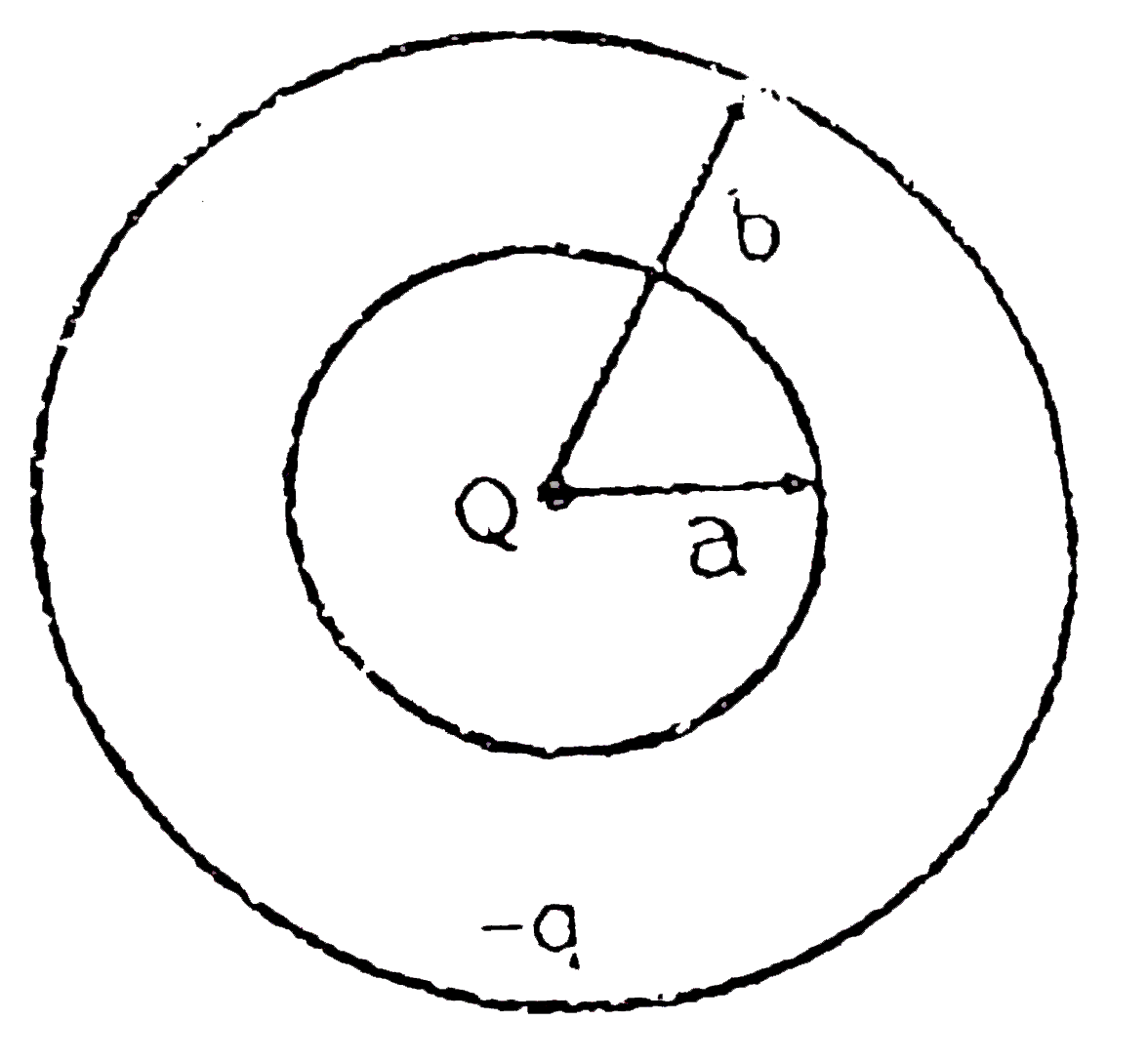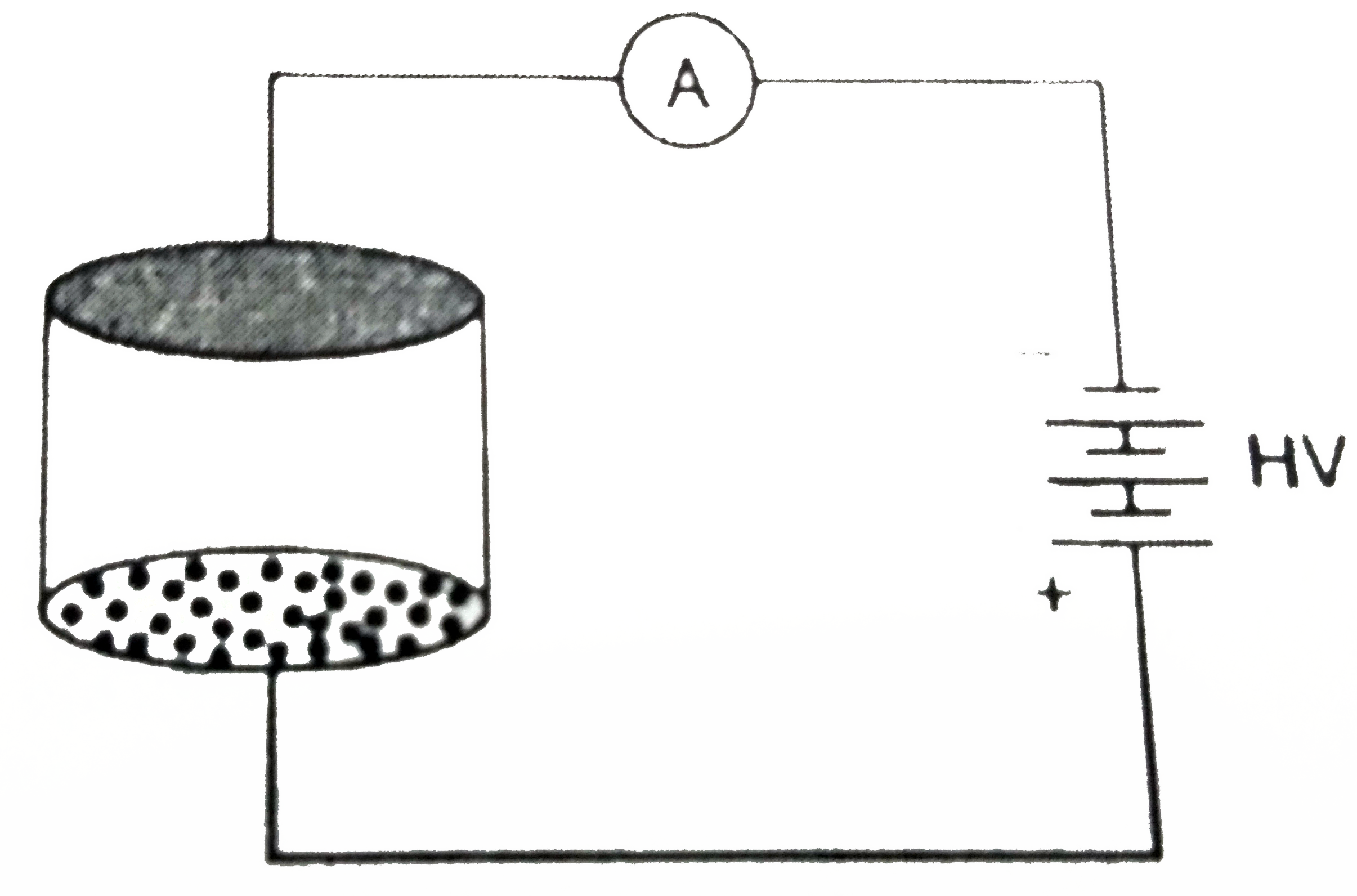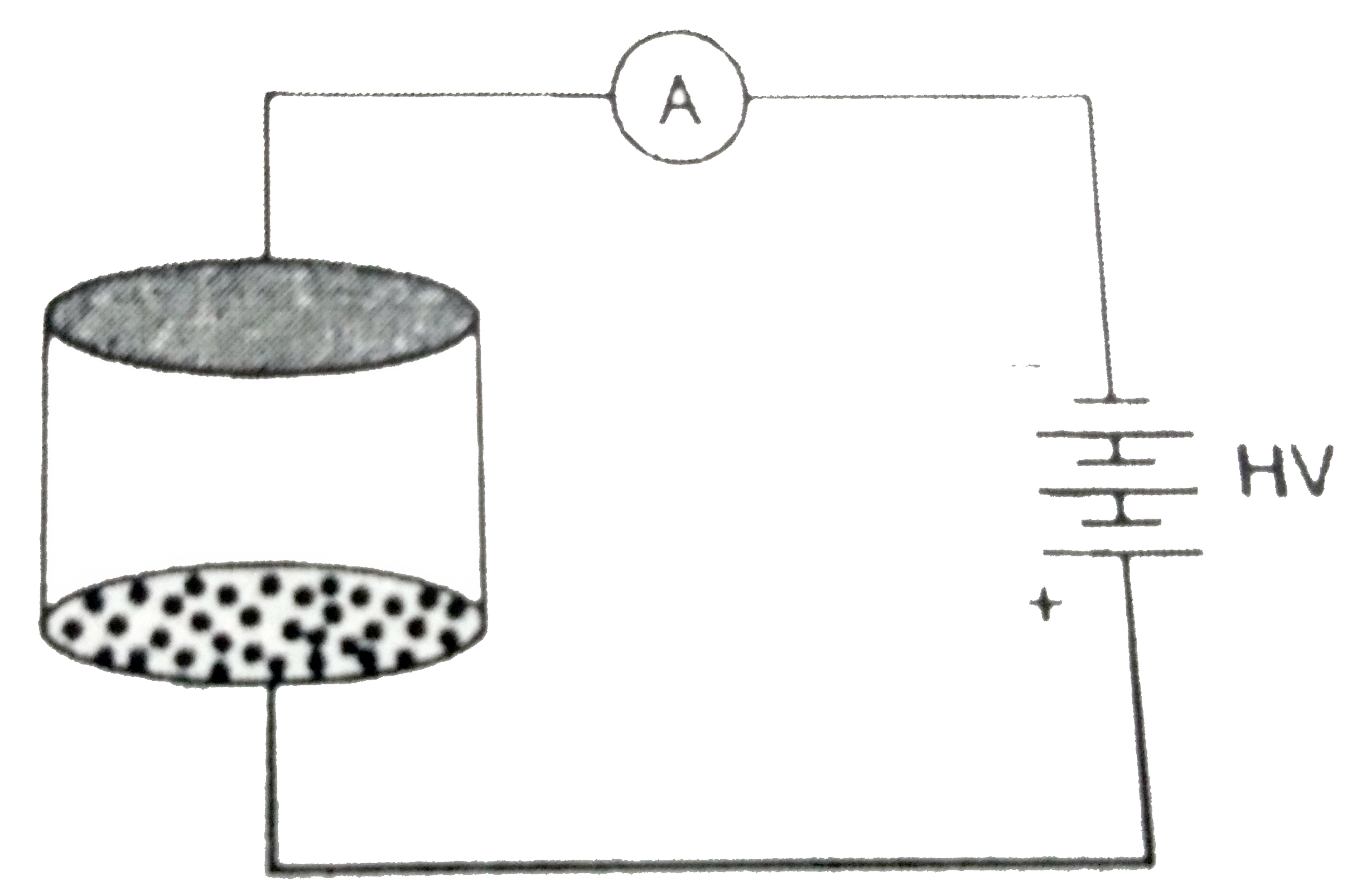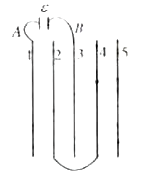Consider an evacuated cylindrical chamber of height h having rigid conducting plates at the ends and an insulating curved surface as shown in the figure. A number of spherical balls made of a light weight and soft material and coated with a conducting material are placed on the bottom plate. The balls have a radius r<<h. Now a high voltage source (HV) is connected across the conducting plates such that the bottom plate is at +V0 and the top plate at −V0. Due to their conducting surface, the balls will get charged, will become equipotential with the plate and are repelled by it. The balls will eventually collide with the top plate, where the coefficient of restitution can be taken to be zero due to the soft nature of the material of the balls. The electric field in the chamber can be considered to be that of a parallel plate capacitor. Assume that there are no collisions between the balls and the interaction between them is negligible. (Ignore gravity)

(a) zero
(b) propotional to the potential V0
(c) proportional to V1/20
(d) proportional to V20
The correct Answer is:D
Iav∝Qt …(i)
Here Q∝V0 …(ii)
Also S=ut+12at2
h=12QEmt2=12(Q×2V0mh)×t2
∴ t∝1V0 …(iii) [∵Q∝V0]
From (i), (ii) and (iii)
Iav∝V01V0=Iav∝V20
Topper's Solved these Questions
- ELECTROSTATICSBook:SUNIL BATRA (41 YEARS IITJEE PHYSICS)Chapter:ELECTROSTATICSExercise:Subjective Problems
Explore 2 Videos
- ELECTROMAGNETIC INDUCTION AND ALTERNATING CURRENTBook:SUNIL BATRA (41 YEARS IITJEE PHYSICS)Chapter:ELECTROMAGNETIC INDUCTION AND ALTERNATING CURRENTExercise:JEE Main And Advanced
Explore 107 Videos
- MODERN PHYSICSBook:SUNIL BATRA (41 YEARS IITJEE PHYSICS)Chapter:MODERN PHYSICSExercise:MCQ (One Correct Answer
Explore 1 Video
Similar Questions
A small conducting sphere is hanged by an insulating thread between the plates of a parallel plate capacitor as shown in figure. The net force on the sphere is
View SolutionShown in the figure a spherical shell with an inner radius 'a' and an outer radius 'b' is made of conducting metarial. A charge +Q is placed at the centre of the spherical shell and a total charge -q s placed on the shell. Charge -q is districuted on the surfaces as :

View Solution
Knowledge Check
Consider an evacuated cylindrical chamber of hight h rigid conducting plates at the ends and an insulating curved surgace as shown in the figure. A number of spherical balls madeof a light weight and soft material and coagted with a conducting material are placed on the bottom plate. The balls have a radius r<<h. Now a high voltage source (HV) is connected across the conducting plates such that th ebottom plate is at+V0and the top plate at−V0. Due to their conducting surface the balls will get charged, will become equipotential with the plate and are repelled by it. The balls will eventually collide with the top plate, where the coefficient of reatitution can be taken to be zero due to the soft nature of the material of the balls. The electric field in the chamber can be considered to be considered to be that of a parallel plate capacitor. Assume tht there are no collisions between the balls and the interaction between them is negligible. (Ignore gravity)

The average current in the steady state registered by the ammeter in the circuit will beAproportional to V20Bproportional to V1/20Cproportional to the potential V0DzeroConsider an evacuated cylindrical chamber of hight h rigid conducting plates at the ends and an insulating curved surgace as shown in the figure. A number of spherical balls madeof a light weight and soft material and coagted with a conducting material are placed on the bottom plate. The balls have a radius r<<h. Now a high voltage source (HV) is connected across the conducting plates such that th ebottom plate is at+V0and the top plate at−V0. Due to their conducting surface the balls will get charged, will become equipotential with the plate and are repelled by it. The balls will eventually collide with the top plate, where the coefficient of reatitution can be taken to be zero due to the soft nature of the material of the balls. The electric field in the chamber can be considered to be considered to be that of a parallel plate capacitor. Assume tht there are no collisions between the balls and the interaction between them is negligible. (Ignore gravity)

Which one of the following statements is correct ?AThe balls will execute simple harmonic motion between the two platesBThe balls will bounce back to the bottom plate carrying the opposite charge they went up withCThe balls will bounce back to the bottom plate carrying the same charge they went up withDThe balls will stick to the top plate and remain thereConsider an evacuted cylindrical chamber of height h having rigid conducting plates at the end and an insulting curved surface as shown in the figure. A number of spherical balls made of a light weight and soft material and coated with a conducting material are placed on the bottom plated. The balls have a radius r << h. Now a high voltage source (HV) is connected across the conducting plates such that the bottom plate is at +V0 and the top plate at –V0. Due to their conducting surface, the balls will eventually collide with the top plate, where the plate and are repelled by it. The balls will eventually collide with the top plate, where the coefficient of restitution can be taken to be zero due to the soft nature the material of the balls. The electric field in the chamber can be considered to be that of a parallel plate capacitor. Assume that there are no collisions between the balls and the interaction between them is negligible. (Ignore gravity)
Which one of the following statements is correct?AThe balls will stick to the top plate and remain thereBThe balls will bounce back to the bottom plate carrying the same charge they went up withCThe balls will bounce back to the bottom plate carrying the opposite charge they went up withDThe balls will execute simple harmonic motion between the two plates
Three charged conducting plates are separated by small distances as shown in figure. The charges on the plates are shown. Find the ratio of charge on right surface and left surface of the middle plate.

View SolutionThree charged conducting plates are separated by small distances as shown in figure. The charges on the plates are shown. Find the ratio of charge on right surface and left surface of the middle plate.

View SolutionFive conducting parallel plates having area A and separation between them d, are placed as shown in the fig. Plate number 2 and 4 are connected with a conducting wire and between point A and B a cell of emf. .ε. is connected . The change flows through the cell is

View SolutionConsider an evacuted cylindrical chamber of height h having rigid conducting plates at the end and an insulting curved surface as shown in the figure. A number of spherical balls made of a light weight and soft material and coated with a conducting material are placed on the bottom plated. The balls have a radius r << h. Now a high voltage source (HV) is connected across the conducting plates such that the bottom plate is at +V0 and the top plate at –V0. Due to their conducting surface, the balls will eventually collide with the top plate, where the plate and are repelled by it. The balls will eventually collide with the top plate, where the coefficient of restitution can be taken to be zero due to the soft nature the material of the balls. The electric field in the chamber can be considered to be that of a parallel plate capacitor. Assume that there are no collisions between the balls and the interaction between them is negligible. (Ignore gravity)
The average current in the steady state registered by the ammeter in the circuit will be
View SolutionShown in the figure a spherical shell with an inner radius 'a' and an outer radius 'b' is made of conducting metarial. A charge +Q is placed at the centre of the spherical shell and a total charge -q s placed on the shell. Charge -q is districuted on the surfaces as :

View Solution

